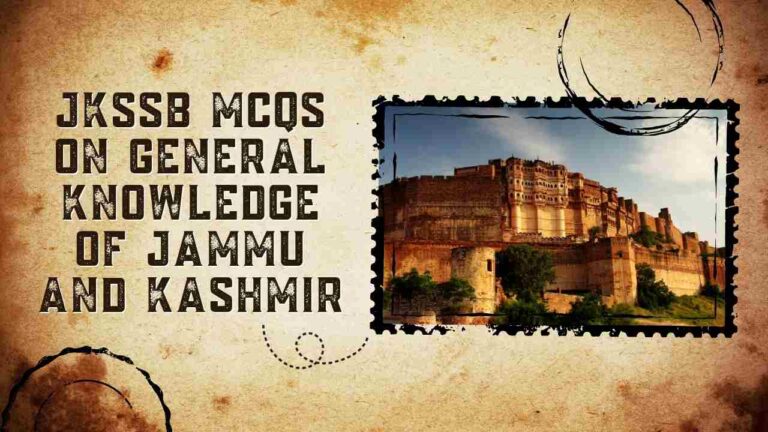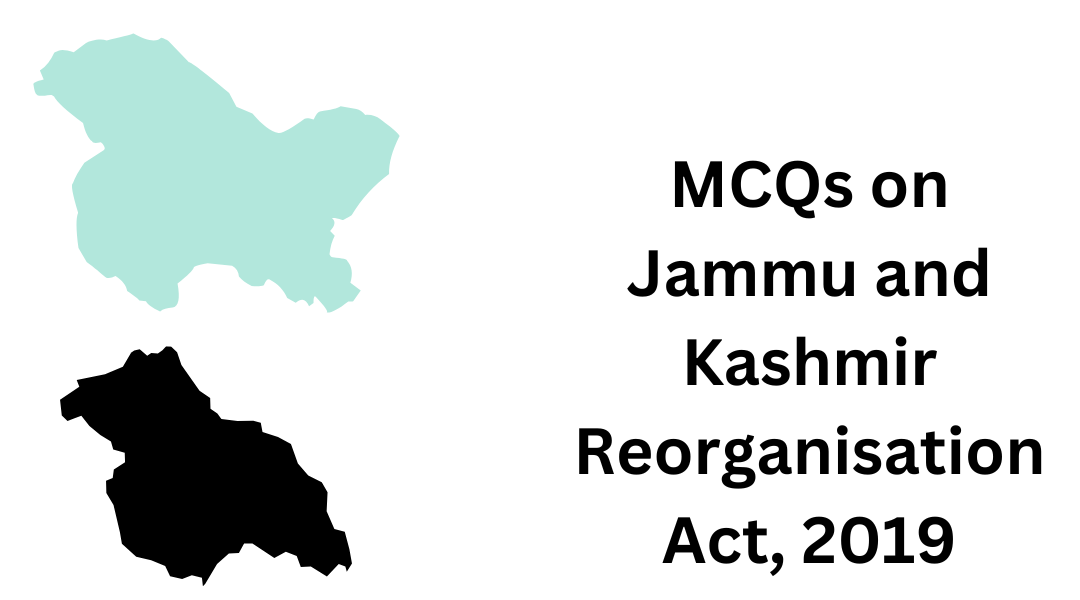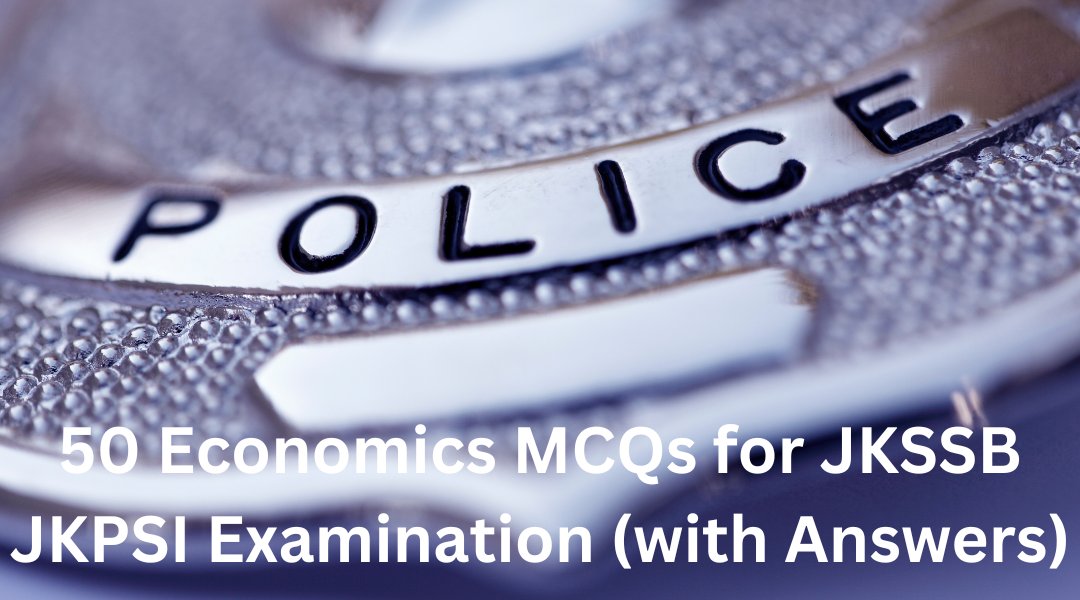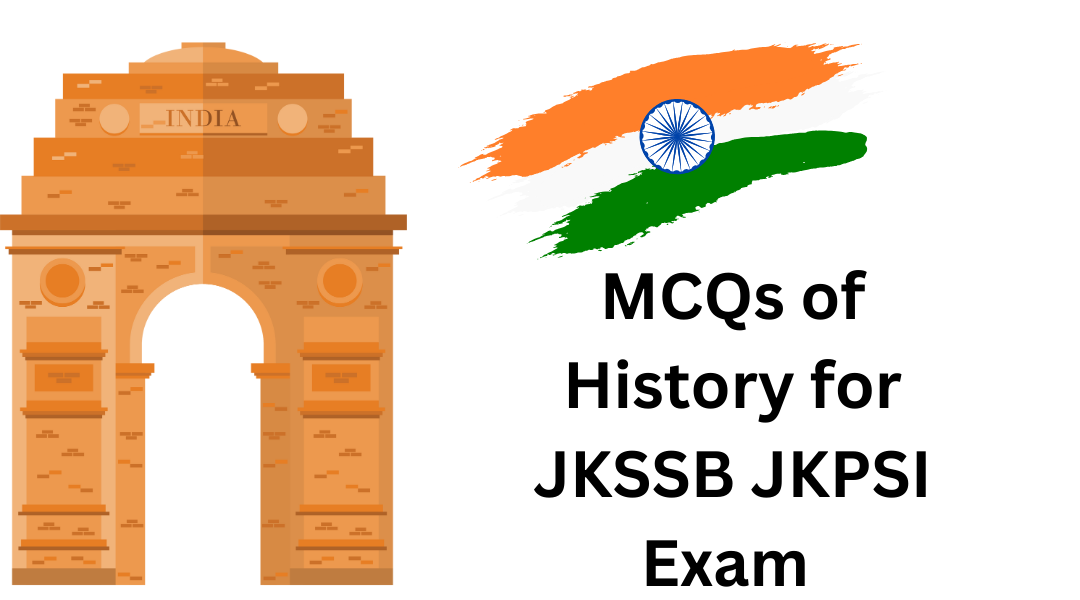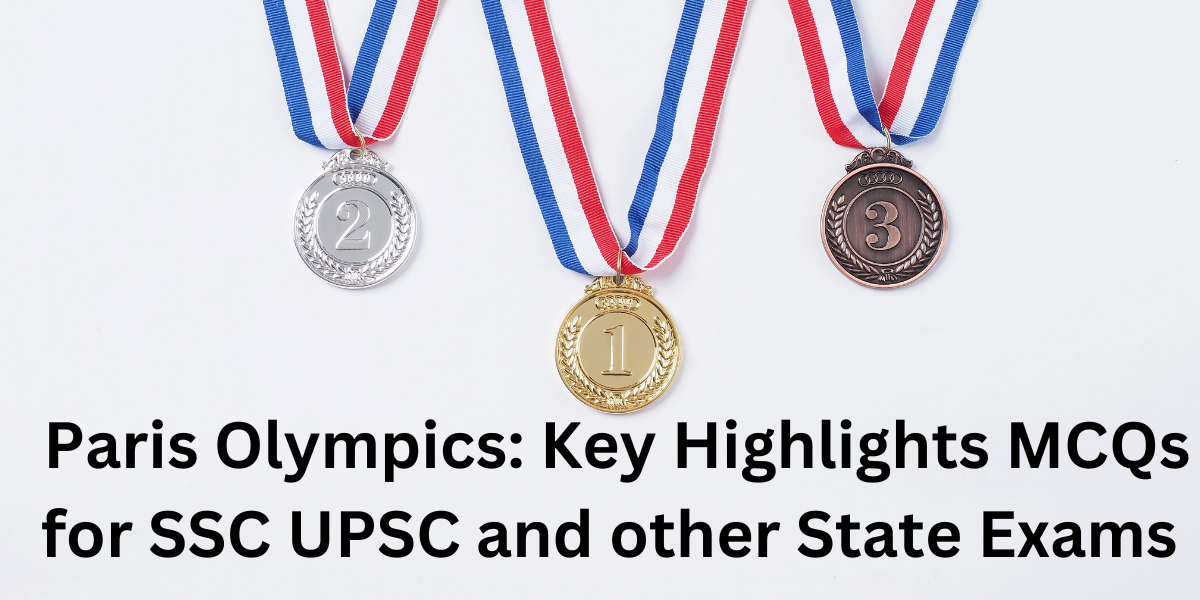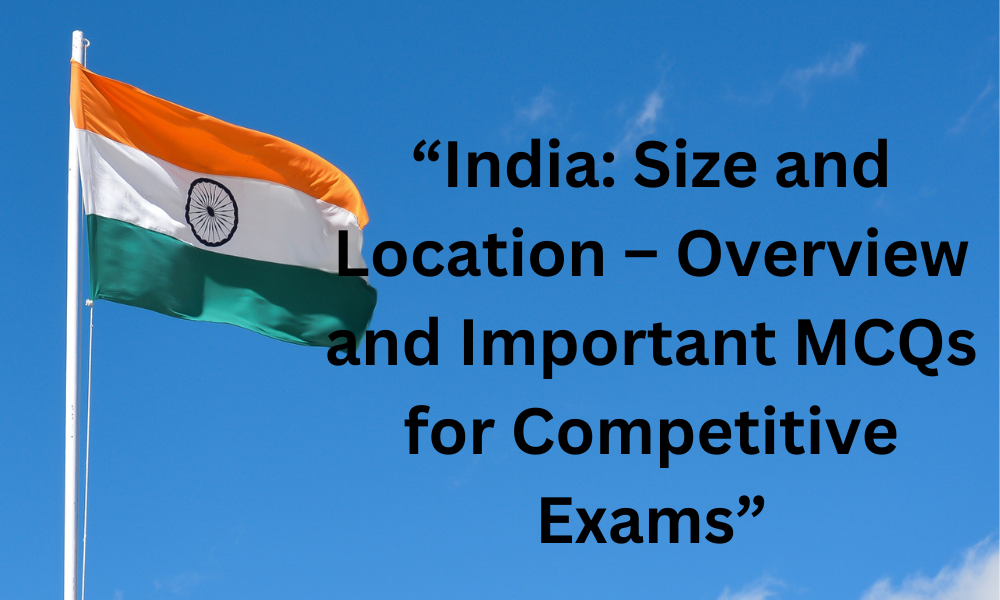JKSSB MCQs on General Knowledge of Jammu and Kashmir are designed to help candidates excel in JKSSB exams. Covering topics like history, geography, culture and current affairs, these MCQs enhance preparation and boost confidence. Practicing them ensures a thorough understanding of key concepts crucial for achieving success in competitive exams.
Here is a set of 100 JKSSB MCQs on General Knowledge about Jammu & Kashmir:
1. What is the capital of Jammu & Kashmir?
a. Srinagar
b. Jammu
c. Leh
d. Anantnag
Answer: a
Explanation: Srinagar is the summer capital of Jammu & Kashmir, while Jammu serves as the winter capital.
2. Who is known as the ‘Shivaji of Jammu & Kashmir’?
a. Maharaja Hari Singh
b. Sheikh Abdullah
c. Maharaja Ranbir Singh
d. Gulab Singh
Answer: c
Explanation: Maharaja Ranbir Singh is regarded as the ‘Shivaji of Jammu & Kashmir’ for his military prowess and reforms.
3. When did Jammu & Kashmir become a Union Territory?
a. 2019
b. 2018
c. 2020
d. 2021
Answer: a
Explanation: Jammu & Kashmir was reorganized as a Union Territory on 31st October 2019.
4. The famous Dal Lake is situated in which city?
a. Jammu
b. Srinagar
c. Leh
d. Pahalgam
Answer: b
Explanation: Dal Lake is located in Srinagar and is one of the most famous tourist attractions in Jammu & Kashmir.
5. Which river flows through the Jammu & Kashmir state?
a. Ganga
b. Chenab
c. Yamuna
d. Sutlej
Answer: b
Explanation: The Chenab River flows through Jammu & Kashmir, originating in the upper reaches of the state.
6. Who was the founder of Jammu & Kashmir state?
a. Gulab Singh
b. Sheikh Abdullah
c. Ranbir Singh
d. Maharaja Hari Singh
Answer: a
Explanation: Gulab Singh was the founder of the princely state of Jammu & Kashmir in 1846.
7. Which mountain range runs along the northern boundary of Jammu & Kashmir?
a. Himalayas
b. Pir Panjal
c. Karakoram
d. Shivalik
Answer: c
Explanation: The Karakoram range runs along the northern boundary of Jammu & Kashmir, forming a natural boundary with Pakistan.
8. Which famous temple is located in Vaishno Devi?
a. Amarnath Temple
b. Shankaracharya Temple
c. Vaishno Devi Temple
d. Raghunath Temple
Answer: c
Explanation: Vaishno Devi Temple, located in the Trikuta Mountains, is one of the most visited pilgrimage sites in India.
9. What is the traditional dance of Jammu & Kashmir called?
a. Garba
b. Kathak
c. Rouf
d. Bharatnatyam
Answer: c
Explanation: Rouf is the traditional folk dance of Jammu & Kashmir, performed by women during festivals.
10. Who was the first Prime Minister of Jammu & Kashmir?
a. Sheikh Abdullah
b. Ghulam Mohammed Sadiq
c. Jawaharlal Nehru
d. Maharaja Hari Singh
Answer: a
Explanation: Sheikh Abdullah was the first Prime Minister of Jammu & Kashmir after the state’s accession to India.
11. The famous Mughal Gardens are located in which region of Jammu & Kashmir?
a. Jammu
b. Srinagar
c. Leh
d. Kargil
Answer: b
Explanation: The famous Mughal Gardens, including Nishat Bagh and Shalimar Bagh, are located in Srinagar.
12. What is the currency of Jammu & Kashmir?
a. Jammu Rupee
b. Indian Rupee
c. Jammu & Kashmir Rupee
d. Pakistan Rupee
Answer: b
Explanation: The currency of Jammu & Kashmir is the Indian Rupee (INR) as it is a Union Territory of India.
13. The famous Amarnath cave is located in which district?
a. Pulwama
b. Srinagar
c. Anantnag
d. Jammu
Answer: c
Explanation: The Amarnath cave, famous for its ice Shivling, is located in the Anantnag district of Jammu & Kashmir.
14. Who was the last ruler of Jammu & Kashmir before its accession to India?
a. Maharaja Hari Singh
b. Sheikh Abdullah
c. Maharaja Gulab Singh
d. Maharaja Ranbir Singh
Answer: a
Explanation: Maharaja Hari Singh was the last ruler of Jammu & Kashmir before it acceded to India in 1947.
15. The famous Shankaracharya Temple is located in which city of Jammu & Kashmir?
a. Srinagar
b. Jammu
c. Leh
d. Pahalgam
Answer: a
Explanation: The Shankaracharya Temple is located on a hilltop in Srinagar and is dedicated to Lord Shiva.
16. Which animal is found in the Dachigam National Park?
a. Bengal Tiger
b. Snow Leopard
c. Kashmir Stag (Hangul)
d. Indian Elephant
Answer: c
Explanation: The Kashmir Stag, also known as Hangul, is found in Dachigam National Park in Jammu & Kashmir.
17. Which city is known as the ‘City of Temples’ in Jammu & Kashmir?
a. Jammu
b. Srinagar
c. Anantnag
d. Leh
Answer: a
Explanation: Jammu is known as the ‘City of Temples’ due to the presence of numerous ancient temples, including the Vaishno Devi Temple.
18. Which of the following is a major tourist attraction in Jammu & Kashmir?
a. Kullu Manali
b. Nainital
c. Gulmarg
d. Rishikesh
Answer: c
Explanation: Gulmarg, known for its scenic beauty and skiing, is one of the top tourist destinations in Jammu & Kashmir.
19. In which year did Jammu & Kashmir officially become a Union Territory of India?
a. 2017
b. 2018
c. 2019
d. 2020
Answer: c
Explanation: Jammu & Kashmir was reorganized as a Union Territory on 31st October 2019.
Read More MCQs of History for JKSSB JKPSI Exam
20. The famous Dal Lake is located in which part of Jammu & Kashmir?
a. Jammu
b. Ladakh
c. Kashmir
d. Kargil
Answer: c
Explanation: Dal Lake is located in the Kashmir Valley and is one of the most iconic natural attractions of the region.
21. Which of the following is the official language of Jammu & Kashmir?
a. Hindi
b. Urdu
c. Kashmiri
d. English
Answer: b
Explanation: Urdu is the official language of Jammu & Kashmir, along with English.
22. What is the area of Jammu & Kashmir?
a. 55,538 sq km
b. 85,806 sq km
c. 1,22,000 sq km
d. 2,22,000 sq km
Answer: b
Explanation: Jammu & Kashmir has an area of 85,806 square kilometers, making it one of the largest states in India.
23. Who was the first woman to become the Chief Minister of Jammu & Kashmir?
a. Gulam Sadiq
b. Sheikh Abdullah
c. Mehbooba Mufti
d. Farooq Abdullah
Answer: c
Explanation: Mehbooba Mufti became the first woman Chief Minister of Jammu & Kashmir in 2017.
24. What is the name of the annual pilgrimage to Amarnath cave?
a. Amarnath Yatra
b. Vaishno Devi Yatra
c. Kumbh Mela
d. Badrinath Yatra
Answer: a
Explanation: The Amarnath Yatra is an annual pilgrimage to the Amarnath cave, dedicated to Lord Shiva, located in the Anantnag district.
25. What is the state animal of Jammu & Kashmir?
a. Lion
b. Tiger
c. Kashmir Stag
d. Elephant
Answer: c
Explanation: The Kashmir Stag, also known as Hangul, is the state animal of Jammu & Kashmir.
26. The first Jammu & Kashmir Governor after its reorganization was: a. Satya Pal Malik
b. Manoj Sinha
c. Girish Chandra Murmu
d. Jagdish Mukhi
Answer: b
Explanation: Manoj Sinha became the first Lieutenant Governor of Jammu & Kashmir after its reorganization in 2019.
27. What is the famous food of Jammu & Kashmir?
a. Rajma
b. Biryani
c. Wazwan
d. Dosa
Answer: c
Explanation: Wazwan is a traditional multi-course meal that is famous in Kashmiri cuisine, often served during festive occasions.
28. What is the name of the largest district in Jammu & Kashmir?
a. Jammu
b. Leh
c. Anantnag
d. Baramulla
Answer: b
Explanation: Leh is the largest district in Jammu & Kashmir in terms of area.
29. Which region of Jammu & Kashmir is known for its apple orchards?
a. Jammu
b. Srinagar
c. Leh
d. Kargil
Answer: b
Explanation: The region around Srinagar is famous for its vast apple orchards, which are a major agricultural product.
30. The ‘Mughal Road’ connects which two regions of Jammu & Kashmir?
a. Srinagar and Poonch
b. Jammu and Leh
c. Jammu and Srinagar
d. Srinagar and Rajouri
Answer: c
Explanation: The Mughal Road connects the cities of Srinagar and Jammu, which was historically used by the Mughal emperors.
31. Who is considered the founder of Jammu & Kashmir’s statehood?
a. Sheikh Abdullah
b. Gulab Singh
c. Maharaja Ranbir Singh
d. Maharaja Hari Singh
Answer: b
Explanation: Gulab Singh is considered the founder of Jammu & Kashmir’s statehood after acquiring it in 1846.
32. In which year was Jammu & Kashmir granted autonomy under Article 370 of the Indian Constitution?
a. 1950
b. 1947
c. 1952
d. 1961
Answer: c
Explanation: Jammu & Kashmir was granted autonomy under Article 370 in 1952, which gave it special status within India.
33. Which city is known as the ‘Winter Capital’ of Jammu & Kashmir?
a. Jammu
b. Srinagar
c. Leh
d. Kargil
Answer: a
Explanation: Jammu serves as the winter capital of Jammu & Kashmir, while Srinagar is the summer capital.
34. The famous ‘Mughal Gardens’ of Kashmir were built by: a. Akbar
b. Shah Jahan
c. Jahangir
d. Humayun
Answer: c
Explanation: The Mughal Gardens, such as Nishat Bagh and Shalimar Bagh, were built by Mughal Emperor Jahangir in the 16th century.
35. The highest point in Jammu & Kashmir is: a. Mount Harmukh
b. Mount Everest
c. K2
d. Nanda Devi
Answer: c
Explanation: K2, the second-highest mountain in the world, is located in the Karakoram range, which lies in Jammu & Kashmir.
36. Which of the following rivers is not in Jammu & Kashmir? a. Chenab
b. Ravi
c. Jhelum
d. Beas
Answer: d
Explanation: The Beas River is not in Jammu & Kashmir; it flows through Punjab and Himachal Pradesh.
37. Who wrote the famous book ‘The Kashmir Shaivism’? a. Swami Vivekananda
b. Abhinavagupta
c. Mahatma Gandhi
d. Sheikh Abdullah
Answer: b
Explanation: The famous book ‘The Kashmir Shaivism’ was written by the philosopher and scholar Abhinavagupta.
38. Which city is known as the ‘Gateway to Kashmir’? a. Srinagar
b. Jammu
c. Katra
d. Anantnag
Answer: b
Explanation: Jammu is known as the ‘Gateway to Kashmir’ due to its location at the entrance to the Kashmir Valley.
39. The famous Gulmarg ski resort is located in which district of Jammu & Kashmir? a. Srinagar
b. Jammu
c. Baramulla
d. Anantnag
Answer: c
Explanation: Gulmarg, a famous skiing destination, is located in the Baramulla district of Jammu & Kashmir.
40. What is the traditional Kashmiri attire worn by men? a. Dhoti
b. Sherwani
c. Kurta-Pajama
d. Pheran
Answer: d
Explanation: The traditional Kashmiri attire for men is the Pheran, a long, loose robe often worn in the cold weather.
Here is the continuation and completion of the set of 100 JKSSB MCQs on General Knowledge about Jammu & Kashmir:
41. What is the official emblem of Jammu & Kashmir?
a. Lion
b. Snow Leopard
c. Peacock
d. Lion and Sword
Answer: d
Explanation: The official emblem of Jammu & Kashmir features a lion and a sword, symbolizing power and protection.
42. Who is considered the ‘Father of Kashmiriyat’?
a. Sheikh Abdullah
b. Zain-ul-Abidin
c. Noor Muhammad
d. Sultan Zain-ul-Abidin
Answer: b
Explanation: Sultan Zain-ul-Abidin, also known as Badshah, is regarded as the ‘Father of Kashmiriyat’ for his efforts in promoting peace and unity in the region.
43. The famous temple of Amarnath is dedicated to which deity?
a. Vishnu
b. Shiva
c. Durga
d. Lakshmi
Answer: b
Explanation: The Amarnath Temple is dedicated to Lord Shiva and is one of the holiest shrines in Hinduism.
44. Which of the following is a popular folk instrument in Jammu & Kashmir?
a. Sitar
b. Santoor
c. Tabla
d. Flute
Answer: b
Explanation: Santoor, a traditional stringed instrument, is a popular folk instrument in Jammu & Kashmir, especially in Kashmir Valley.
45. In which year was the Article 370 abrogated?
a. 2018
b. 2019
c. 2020
d. 2021
Answer: b
Explanation: Article 370, which granted special status to Jammu & Kashmir, was abrogated on 5th August 2019.
46. Which airport is the busiest in Jammu & Kashmir?
a. Jammu Airport
b. Srinagar Airport
c. Leh Airport
d. Pahalgam Airport
Answer: b
Explanation: Srinagar Airport is the busiest in Jammu & Kashmir, with numerous domestic flights operating to and from the region.
47. What is the most famous flower of Jammu & Kashmir?
a. Rose
b. Lily
c. Lotus
d. Saffron
Answer: d
Explanation: Saffron is one of the most famous and precious flowers grown in Jammu & Kashmir, especially in Pampore.
48. What is the main festival of Jammu & Kashmir?
a. Diwali
b. Eid
c. Baisakhi
d. Losar
Answer: b
Explanation: Eid is the most widely celebrated festival in Jammu & Kashmir, with large gatherings and feasts.
49. Which place in Jammu & Kashmir is famous for its saffron cultivation?
a. Anantnag
b. Pulwama
c. Pampore
d. Kishtwar
Answer: c
Explanation: Pampore, located in the Kashmir Valley, is famous for its saffron cultivation, known for its high quality.
50. Which state shares a border with Jammu & Kashmir to the south?
a. Punjab
b. Himachal Pradesh
c. Haryana
d. Uttar Pradesh
Answer: a
Explanation: Punjab shares a southern border with Jammu & Kashmir, separated by the Shivalik Hills.
51. The famous 7th-century Buddhist site, ‘Avantipora Ruins,’ is located in which district of Jammu & Kashmir?
a. Srinagar
b. Jammu
c. Anantnag
d. Baramulla
Answer: c
Explanation: The Avantipora Ruins, a famous Buddhist site, are located in the Anantnag district of Jammu & Kashmir.
52. Which district is known for its beautiful apple orchards?
a. Leh
b. Kargil
c. Baramulla
d. Pulwama
Answer: c
Explanation: Baramulla district is known for its beautiful and vast apple orchards in the Kashmir Valley.
53. Which famous peak is located in the Pir Panjal range?
a. Mount Harmukh
b. Mount Abu
c. Mount Everest
d. Mount Kolahoi
Answer: d
Explanation: Mount Kolahoi is the highest peak in the Pir Panjal range and is located in Jammu & Kashmir.
54. The region of Ladakh was once a part of which state?
a. Himachal Pradesh
b. Jammu & Kashmir
c. Uttar Pradesh
d. Punjab
Answer: b
Explanation: Ladakh was a region of Jammu & Kashmir until it was made a separate Union Territory in 2019.
55. The famous shrine of Hazratbal is located in which city of Jammu & Kashmir?
a. Srinagar
b. Jammu
c. Anantnag
d. Leh
Answer: a
Explanation: The Hazratbal Shrine, a revered Muslim site, is located in Srinagar and is known for housing a relic of Prophet Muhammad.
56. Who was the last ruler of Jammu & Kashmir before the state’s merger with India?
a. Sheikh Abdullah
b. Maharaja Hari Singh
c. Maharaja Gulab Singh
d. Maharaja Ranbir Singh
Answer: b
Explanation: Maharaja Hari Singh was the last ruler of Jammu & Kashmir before the state’s merger with India in 1947.
57. Which of these is a famous pilgrimage site in Jammu & Kashmir?
a. Kumbh Mela
b. Vaishno Devi
c. Amarnath Yatra
d. Badrinath
Answer: b
Explanation: Vaishno Devi, located in Jammu, is one of the most famous pilgrimage sites in Jammu & Kashmir.
58. Which place in Jammu & Kashmir is famous for its unique houseboats?
a. Leh
b. Srinagar
c. Kargil
d. Jammu
Answer: b
Explanation: Srinagar is famous for its unique houseboats on Dal Lake, a popular attraction for tourists.
59. Which wildlife sanctuary is located in Jammu & Kashmir?
a. Kaziranga National Park
b. Dachigam Wildlife Sanctuary
c. Jim Corbett National Park
d. Sundarbans
Answer: b
Explanation: Dachigam Wildlife Sanctuary, located near Srinagar, is home to the endangered Kashmir stag (Hangul).
60. The state flower of Jammu & Kashmir is: a. Rose
b. Lotus
c. Cherry Blossom
d. Crocus
Answer: d
Explanation: The state flower of Jammu & Kashmir is the Crocus, which blooms during the spring season.
61. Which of the following is a famous trekking destination in Jammu & Kashmir?
a. Manali
b. Gulmarg
c. Pahalgam
d. Leh
Answer: c
Explanation: Pahalgam is a famous trekking and adventure tourism destination in Jammu & Kashmir, known for its scenic beauty.
62. What is the term used for the local language spoken in the Kashmir Valley?
a. Punjabi
b. Urdu
c. Kashmiri
d. Dogri
Answer: c
Explanation: Kashmiri is the local language spoken in the Kashmir Valley, a major regional language in Jammu & Kashmir.
63. Which river is associated with the famous Dal Lake in Srinagar?
a. Jhelum
b. Chenab
c. Ravi
d. Sutlej
Answer: a
Explanation: The Jhelum River flows through the Dal Lake in Srinagar and is a significant waterbody in the region.
64. What is the main crop grown in Jammu & Kashmir?
a. Wheat
b. Rice
c. Barley
d. Saffron
Answer: b
Explanation: Rice is the main crop grown in Jammu & Kashmir, along with other agricultural products like apples.
65. Who was the first female ruler of Jammu & Kashmir?
a. Razia Sultana
b. Shahi Begum
c. Maharani Tara Devi
d. Chand Bibi
Answer: b
Explanation: Shahi Begum was the first female ruler of Jammu & Kashmir, ruling in the 16th century.
66. What is the largest city in Jammu & Kashmir?
a. Srinagar
b. Jammu
c. Leh
d. Kargil
Answer: a
Explanation: Srinagar is the largest city in Jammu & Kashmir, serving as the summer capital of the region.
67. Which district of Jammu & Kashmir is known for its Buddhist culture?
a. Kargil
b. Jammu
c. Leh
d. Anantnag
Answer: c
Explanation: Leh district is known for its strong Buddhist culture and is famous for its monasteries and festivals.
68. What is the population density of Jammu & Kashmir?
a. 123 per sq km
b. 228 per sq km
c. 1,00,000 per sq km
d. 101 per sq km
Answer: a
Explanation: The population density of Jammu & Kashmir is approximately 123 per square kilometer, as per the 2011 census.
69. Who was the founder of the Jammu & Kashmir National Conference (NC)?
a. Ghulam Mohammed Sadiq
b. Sheikh Abdullah
c. Maharaja Hari
Singh
d. Indira Gandhi
Answer: b
Explanation: Sheikh Abdullah was the founder of the Jammu & Kashmir National Conference (NC), a prominent political party in the region.
70. The famous Vaishno Devi Shrine is located in which district of Jammu & Kashmir?
a. Udhampur
b. Jammu
c. Reasi
d. Kathua
Answer: c
Explanation: The Vaishno Devi Shrine is located in the Reasi district of Jammu & Kashmir, attracting millions of pilgrims annually.
Here is the continuation and completion of the remaining JKSSB MCQs on General Knowledge about Jammu & Kashmir:
71. What is the name of the famous lake located in the Kashmir Valley?
a. Dal Lake
b. Pangong Lake
c. Nagin Lake
d. Wular Lake
Answer: a
Explanation: Dal Lake, located in Srinagar, Kashmir, is one of the most famous and picturesque lakes in Jammu & Kashmir, known for its houseboats.
72. Which of the following districts is part of the Jammu region?
a. Kishtwar
b. Pulwama
c. Anantnag
d. Baramulla
Answer: a
Explanation: Kishtwar is located in the Jammu region of Jammu & Kashmir, known for its natural beauty and rich culture.
73. Which is the largest district in Jammu & Kashmir by area?
a. Jammu
b. Leh
c. Kargil
d. Srinagar
Answer: b
Explanation: Leh is the largest district in Jammu & Kashmir, covering a vast area in the Ladakh region.
74. What is the primary language spoken in Jammu?
a. Kashmiri
b. Dogri
c. Urdu
d. Hindi
Answer: b
Explanation: Dogri is the primary language spoken in the Jammu region, alongside Hindi and English.
75. The famous Mughal Gardens are located in which city of Jammu & Kashmir?
a. Srinagar
b. Jammu
c. Pahalgam
d. Leh
Answer: a
Explanation: The famous Mughal Gardens, including Nishat Bagh, Shalimar Bagh, and Chashme Shahi, are located in Srinagar.
76. Which river originates from the Mansar Lake in Jammu & Kashmir?
a. Chenab
b. Jhelum
c. Ravi
d. Tawi
Answer: d
Explanation: The Tawi River originates from the Mansar Lake and is a significant river in the Jammu region.
77. Which is the highest pass in Jammu & Kashmir?
a. Zoji La
b. Banihal Pass
c. Khardung La
d. Pir Panjal Pass
Answer: a
Explanation: Zoji La, located in the Pir Panjal mountain range, is the highest pass in Jammu & Kashmir, connecting Kashmir to Ladakh.
78. Who is known as the ‘Sher-e-Kashmir’?
a. Sheikh Abdullah
b. Maharaja Hari Singh
c. Lal Ded
d. Zain-ul-Abidin
Answer: a
Explanation: Sheikh Abdullah, the founder of the Jammu & Kashmir National Conference, is popularly known as the ‘Sher-e-Kashmir’ (Lion of Kashmir).
79. What is the traditional Kashmiri dish made of rice called?
a. Rogan Josh
b. Yakhni
c. Dum Aloo
d. Pulao
Answer: d
Explanation: Pulao is a traditional Kashmiri rice dish, often served with various meat or vegetable accompaniments.
80. The famous Chadar Trek is located in which part of Jammu & Kashmir?
a. Srinagar
b. Leh
c. Kargil
d. Anantnag
Answer: b
Explanation: The Chadar Trek is located in Leh, Ladakh, and is a popular winter trek along the frozen Zanskar River.
81. Which of the following is a famous temple in Jammu & Kashmir?
a. Golden Temple
b. Vaishno Devi Temple
c. Jagannath Temple
d. Meenakshi Temple
Answer: b
Explanation: Vaishno Devi Temple, located in the Trikuta Mountains, is one of the most famous pilgrimage sites in Jammu & Kashmir.
82. Which of the following regions in Jammu & Kashmir is known for Buddhist monasteries?
a. Kashmir Valley
b. Jammu
c. Leh-Ladakh
d. Poonch
Answer: c
Explanation: Leh-Ladakh is known for its Buddhist monasteries, including Hemis, Thiksey, and Spituk, attracting tourists and pilgrims alike.
83. Which is the most famous festival celebrated in the Jammu region of Jammu & Kashmir?
a. Eid
b. Diwali
c. Lohri
d. Baisakhi
Answer: d
Explanation: Baisakhi is a major festival in Jammu, celebrated with enthusiasm by the people of the region to mark the beginning of the harvest season.
84. The Wular Lake is located in which district of Jammu & Kashmir?
a. Jammu
b. Srinagar
c. Baramulla
d. Kulgam
Answer: c
Explanation: Wular Lake, one of the largest freshwater lakes in Asia, is located in the Baramulla district of Jammu & Kashmir.
85. Which famous site in Jammu & Kashmir is a UNESCO World Heritage Site?
a. Amarnath
b. Vaishno Devi
c. The Buddhist Monasteries of Ladakh
d. Srinagar Gardens
Answer: c
Explanation: The Buddhist Monasteries of Ladakh are designated as a UNESCO World Heritage Site, known for their cultural and architectural significance.
86. The famous Dachigam National Park is located near which city in Jammu & Kashmir?
a. Leh
b. Jammu
c. Kargil
d. Srinagar
Answer: d
Explanation: Dachigam National Park, located near Srinagar, is home to the endangered Kashmiri stag (Hangul).
87. What is the name of the highest mountain in Jammu & Kashmir?
a. Mount Kolahoi
b. Mount Harmukh
c. Mount Everest
d. Mount Nanda Devi
Answer: a
Explanation: Mount Kolahoi is the highest mountain in Jammu & Kashmir, with an elevation of 5,425 meters above sea level.
88. Who was the first Prime Minister of Jammu & Kashmir?
a. Ghulam Mohammad Sadiq
b. Mehr Chand Mahajan
c. Sheikh Abdullah
d. Bakshi Ghulam Mohammad
Answer: b
Explanation: Mehr Chand Mahajan was the first Prime Minister of Jammu & Kashmir before the position was renamed as Chief Minister after the state’s integration with India.
89. The Jammu & Kashmir Legislative Assembly has how many seats?
a. 100
b. 120
c. 87
d. 90
Answer: c
Explanation: The Jammu & Kashmir Legislative Assembly has 87 seats, representing both the Jammu and Kashmir regions.
90. Who is the patron deity of the famous Bhairav Nath Temple in Jammu & Kashmir?
a. Lord Vishnu
b. Lord Shiva
c. Lord Bhairav
d. Goddess Durga
Answer: c
Explanation: The Bhairav Nath Temple, located in Srinagar, is dedicated to Lord Bhairav, a form of Lord Shiva.
91. Which district of Jammu & Kashmir is known for its religious significance to Sikhs?
a. Jammu
b. Anantnag
c. Pulwama
d. Poonch
Answer: a
Explanation: Jammu is significant to Sikhs, with places like Gurudwara Guru Nanak Dev Ji and other religious sites.
92. Which town is known as the ‘City of Temples’ in Jammu & Kashmir?
a. Srinagar
b. Jammu
c. Leh
d. Udhampur
Answer: b
Explanation: Jammu is known as the ‘City of Temples’ due to the presence of numerous temples, including the famous Vaishno Devi shrine.
93. The ‘Kashmir Shawl’ is made from the wool of which animal?
a. Goat
b. Sheep
c. Yak
d. Camel
Answer: a
Explanation: The famous Kashmir Shawl is made from the wool of the Pashmina goat, known for its softness and warmth.
94. Which of the following rivers flows through Jammu & Kashmir?
a. Ganges
b. Yamuna
c. Jhelum
d. Godavari
Answer: c
Explanation: The Jhelum River flows through Jammu & Kashmir, originating in the Indian-administered part of the region.
95. Which town in Jammu & Kashmir is famous for its glassblowing industry?
a. Srinagar
b. Katra
c. Sopore
d. Pattan
Answer: d
Explanation: Pattan in Jammu & Kashmir is known for its traditional glassblowing industry, which is famous for making decorative items.
96. Who was the first female Prime Minister of Jammu & Kashmir?
a. Mehbooba Mufti
b. Sheikh Abdullah
c. Indira Gandhi
d. Sonia Gandhi
Answer: a
Explanation: Mehbooba Mufti became the first female Chief Minister of Jammu & Kashmir in 2018.
97. The famous Pinjore Garden is located in which district?
a. Jammu
b. Leh
c. Srinagar
d. Kishtwar
Answer: a
Explanation: Pinjore Garden, an architectural marvel, is located in the Jammu district of Jammu & Kashmir.
98. Which place in Jammu & Kashmir is a famous Buddhist pilgrimage site?
a. Amarnath
b. Leh
c. Mathura
d. Ladakh
Answer: d
Explanation: Ladakh is a famous Buddhist pilgrimage site with numerous monasteries and stupas.
99. The Raghunath Temple is located in which city of Jammu & Kashmir?
a. Srinagar
b. Poonch
c. Jammu
d. Kargil
Answer: c
Explanation: The Raghunath Temple, dedicated to Lord Ram, is located in Jammu and is an important religious site.
100. Which district is the headquarters of the Jammu & Kashmir Tourism Department?
a. Srinagar
b. Leh
c. Jammu
d. Anantnag
Answer: c
Explanation: The headquarters of the Jammu & Kashmir Tourism Department is located in Jammu, serving as the administrative center for tourism activities.
This completes the set of 100 JKSSB General Knowledge MCQs related to Jammu & Kashmir!
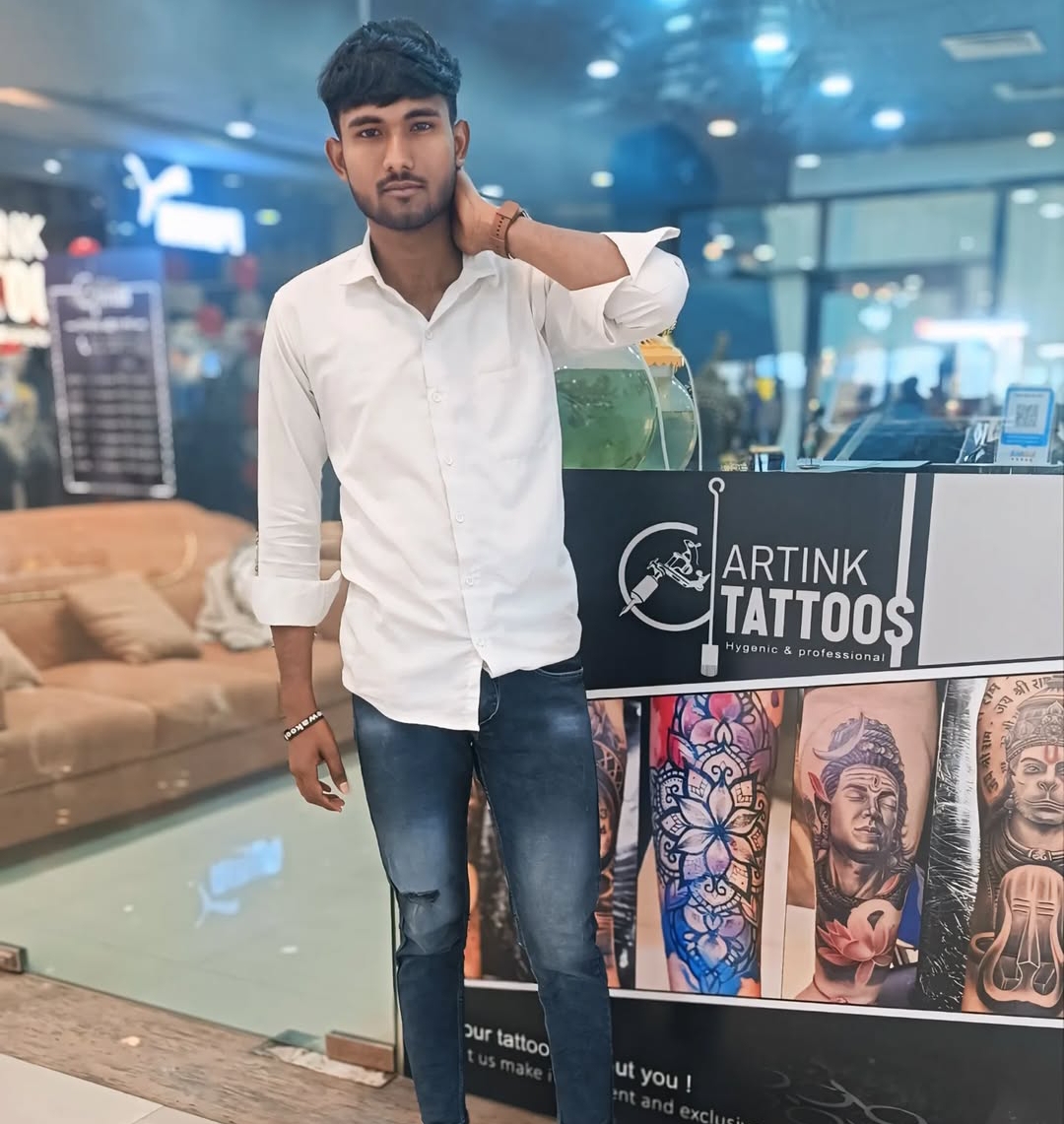
Asif Iqbal Wani is a professional content writer with over 5 years of experience in the education niche. With a speciality for content creation that’s thought-provoking and engaging, Arun specializes in making study guides and resources for exams and curriculum-based content.
With a zeal for learning, Asif comes across as a vibrant educator who simplifies the most difficult concepts into information that is easily digested, enabling learners to achieve success academically. His commitment to accuracy and creativity ensures that every piece of content not only teaches but also inspires.
Asif is committed to providing high-quality impactful content that works well for different student and faculty requirements.
